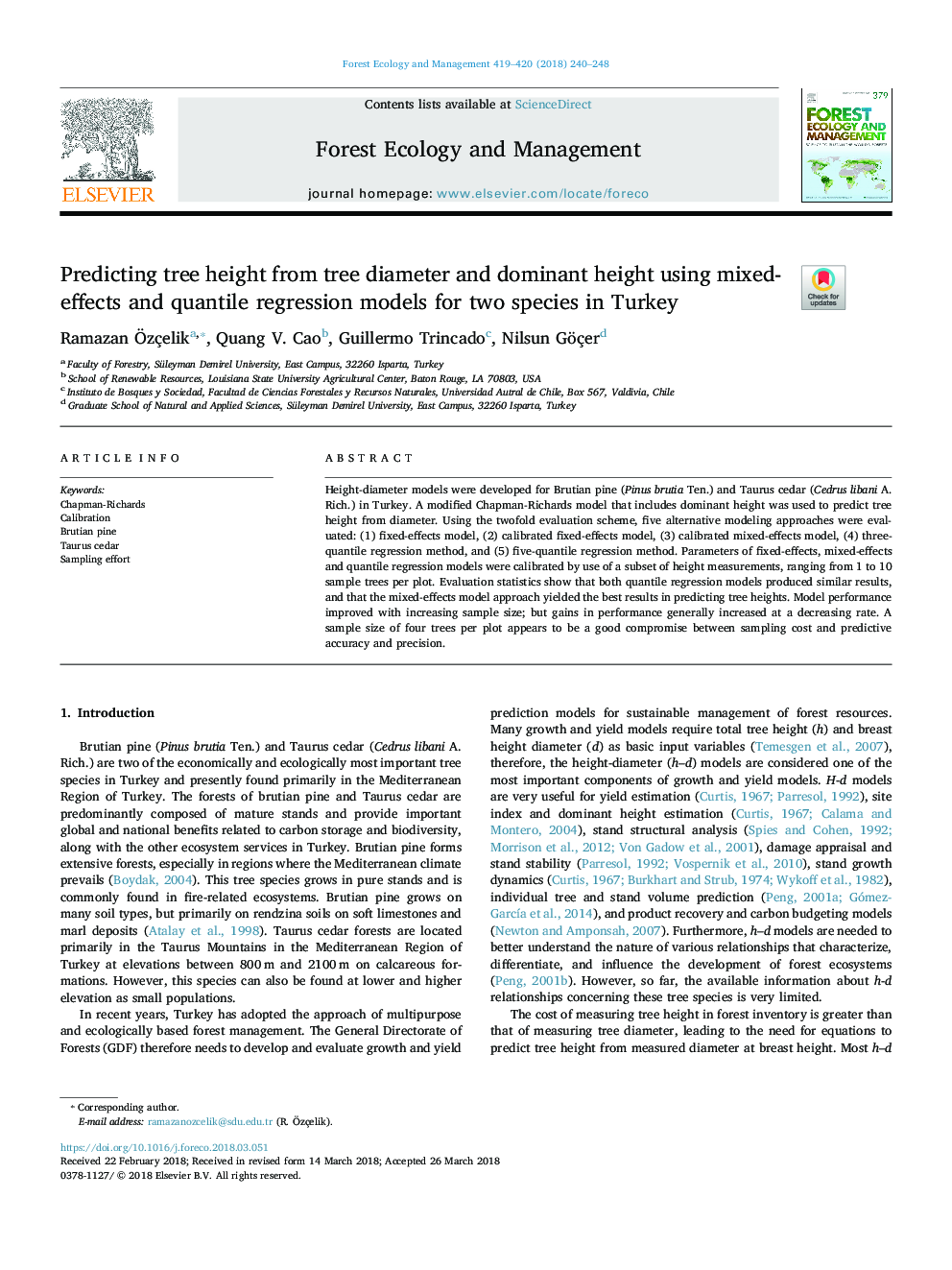| Article ID | Journal | Published Year | Pages | File Type |
|---|---|---|---|---|
| 6541722 | Forest Ecology and Management | 2018 | 9 Pages |
Abstract
Height-diameter models were developed for Brutian pine (Pinus brutia Ten.) and Taurus cedar (Cedrus libani A. Rich.) in Turkey. A modified Chapman-Richards model that includes dominant height was used to predict tree height from diameter. Using the twofold evaluation scheme, five alternative modeling approaches were evaluated: (1) fixed-effects model, (2) calibrated fixed-effects model, (3) calibrated mixed-effects model, (4) three-quantile regression method, and (5) five-quantile regression method. Parameters of fixed-effects, mixed-effects and quantile regression models were calibrated by use of a subset of height measurements, ranging from 1 to 10 sample trees per plot. Evaluation statistics show that both quantile regression models produced similar results, and that the mixed-effects model approach yielded the best results in predicting tree heights. Model performance improved with increasing sample size; but gains in performance generally increased at a decreasing rate. A sample size of four trees per plot appears to be a good compromise between sampling cost and predictive accuracy and precision.
Keywords
Related Topics
Life Sciences
Agricultural and Biological Sciences
Ecology, Evolution, Behavior and Systematics
Authors
Ramazan Ãzçelik, Quang V. Cao, Guillermo Trincado, Nilsun Göçer,
